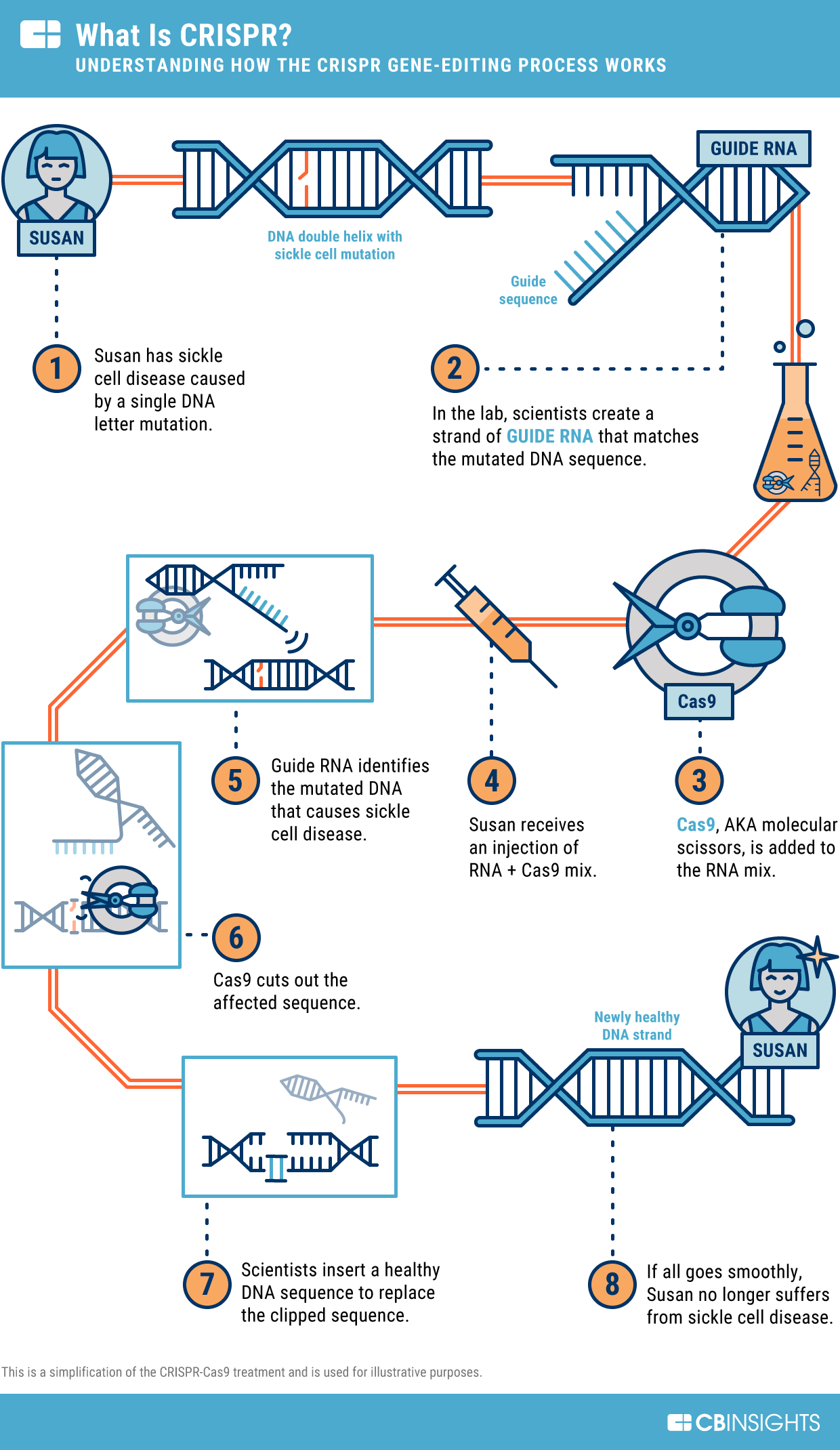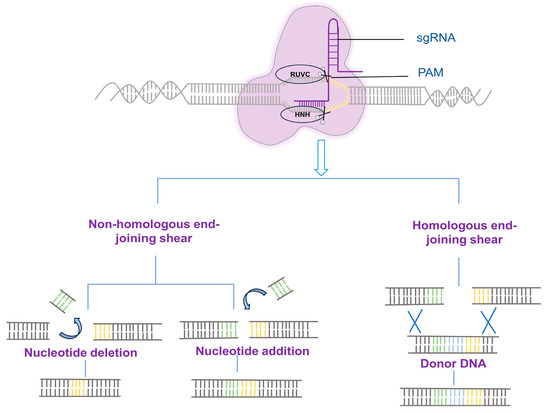Aging is an inevitable part of life, but what if we could slow it down, reverse its effects, or even stop it altogether? For centuries, humans have sought the elusive “fountain of youth,” exploring everything from alchemy to modern medicine in the quest to extend lifespan and improve healthspan. In recent years, a groundbreaking technology has emerged that could bring us closer than ever to achieving this goal: CRISPR (Clustered Regularly Interspaced Short Palindromic Repeats). This revolutionary gene-editing tool is transforming the field of anti-aging research, offering unprecedented opportunities to understand and manipulate the biological processes that drive aging.
CRISPR is not just a tool for editing genes; it’s a key to unlocking the mysteries of aging itself. With this technology, we are closer than ever to turning back the clock on human biology.
Dr. Jennifer Doudna, Nobel Prize-winning biochemist and co-inventor of CRISPR-Cas9
In this blog, we’ll dive into how CRISPR is being used to revolutionize anti-aging research, the potential it holds for extending human lifespan, and the ethical considerations that come with such powerful technology.
What is CRISPR? A Quick Primer
CRISPR is a gene-editing technology that allows scientists to precisely modify DNA sequences within living organisms. Originally discovered as part of the bacterial immune system, CRISPR works like a pair of molecular scissors. It uses a guide RNA to locate specific DNA sequences and an enzyme called Cas9 to cut and edit the DNA at that location. This process enables researchers to delete, repair, or replace genes with remarkable accuracy.

Since its discovery, CRISPR has been hailed as one of the most significant scientific breakthroughs of the 21st century. It has already been used to treat genetic disorders, develop disease-resistant crops, and even engineer mosquitoes to combat malaria. Now, scientists are turning their attention to one of the most complex and universal challenges: aging.
The Biology of Aging: Why Do We Age?
Before we can understand how CRISPR is revolutionizing anti-aging research, it’s important to understand what causes aging at the molecular level. Aging is a complex process influenced by a combination of genetic, environmental, and lifestyle factors. Some of the key biological mechanisms involved in aging include:
- Telomere Shortening: Telomeres are protective caps at the ends of chromosomes that shorten with each cell division. When telomeres become too short, cells can no longer divide, leading to cellular aging and death.
- DNA Damage: Over time, DNA accumulates damage from environmental factors like UV radiation and toxins, as well as internal processes like oxidative stress. This damage can lead to mutations and cellular dysfunction.
- Epigenetic Changes: Aging is associated with changes in gene expression, often caused by modifications to the epigenome (chemical tags that regulate DNA activity).
- Senescent Cells: These are “zombie cells” that stop dividing but don’t die. They accumulate in tissues and contribute to inflammation and age-related diseases.
- Mitochondrial Dysfunction: Mitochondria, the powerhouses of the cell, become less efficient with age, leading to reduced energy production and increased oxidative stress.
CRISPR offers a powerful tool to target and modify these aging mechanisms, potentially slowing down or even reversing the aging process.
How CRISPR is Revolutionizing Anti-Aging Research
CRISPR is being used in a variety of ways to study and combat aging. Here are some of the most exciting applications:

1. Editing Genes Associated with Longevity
Scientists have identified several genes that play a role in aging and longevity. For example, the FOXO3 gene is associated with increased lifespan in humans, while the mTOR pathway regulates cellular growth and metabolism. CRISPR allows researchers to selectively edit these genes to study their effects on aging.
In one groundbreaking study, researchers used CRISPR to activate the SIRT6 gene, which is involved in DNA repair and metabolism. The result? Mice with enhanced SIRT6 activity lived longer and showed fewer signs of aging.
2. Repairing DNA Damage
DNA damage is a major driver of aging, but CRISPR offers a way to repair it. Scientists are developing CRISPR-based tools to target and fix damaged DNA, potentially preventing age-related diseases like cancer and neurodegeneration.
For example, researchers have used CRISPR to repair mutations in the LMNA gene, which causes Hutchinson-Gilford progeria syndrome, a rare genetic disorder that causes accelerated aging. This breakthrough could have implications for treating normal aging as well.
3. Eliminating Senescent Cells
Senescent cells are a hallmark of aging, but CRISPR could help eliminate them. Researchers are exploring ways to use CRISPR to target and destroy these “zombie cells,” potentially reducing inflammation and improving tissue function.
In one study, scientists used CRISPR to engineer immune cells that specifically target and kill senescent cells. This approach could pave the way for new anti-aging therapies.
4. Extending Telomeres
Telomere shortening is a key factor in cellular aging, but CRISPR could be used to extend telomeres and delay aging. Researchers have already used CRISPR to lengthen telomeres in human cells in the lab, restoring their ability to divide and function.
While this research is still in its early stages, it holds promise for developing therapies that could slow down or reverse the aging process.
5. Modulating the Epigenome
Aging is associated with changes in the epigenome, but CRISPR offers a way to reset it. Scientists are developing CRISPR-based tools to modify epigenetic markers, potentially reversing age-related changes in gene expression.
In one study, researchers used CRISPR to reprogram the epigenome of aged mice, restoring youthful gene expression patterns and improving tissue function.
The Potential of CRISPR for Human Longevity
The applications of CRISPR in anti-aging research are still in the experimental stage, but the potential is enormous. If successful, CRISPR-based therapies could:
Aging is not a fixed destiny but a malleable process. CRISPR gives us the power to rewrite the story of aging, offering hope for a future where we can live longer, healthier lives.
Dr. David Sinclair, Professor of Genetics at Harvard Medical School and leading anti-aging researcher.
- Extend Lifespan: By targeting the genetic and molecular mechanisms of aging, CRISPR could help humans live longer, healthier lives.
- Prevent Age-Related Diseases: CRISPR could be used to prevent or treat diseases like Alzheimer’s, cancer, and heart disease, which are major causes of death in older adults.
- Enhance Quality of Life: By slowing down or reversing the aging process, CRISPR could help people maintain their physical and cognitive function well into old age.
However, it’s important to note that aging is an incredibly complex process, and CRISPR is not a magic bullet. While the technology holds great promise, there are still many challenges to overcome before it can be widely used in humans.
Ethical Considerations and Challenges
As with any powerful technology, CRISPR comes with ethical and practical challenges. Some of the key concerns include:

- Off-Target Effects: CRISPR is highly precise, but it’s not perfect. Off-target edits could lead to unintended consequences, including new diseases or genetic disorders.
- Access and Equity: If CRISPR-based anti-aging therapies become available, they could be expensive and inaccessible to many people, exacerbating existing inequalities.
- Ethical Implications of Life Extension: Extending human lifespan raises profound ethical questions. What would it mean for society if people could live significantly longer? How would it impact resources, population growth, and the environment?
- Regulation and Oversight: The use of CRISPR in humans requires careful regulation to ensure safety and ethical standards are met.
These challenges highlight the need for ongoing dialogue among scientists, policymakers, and the public to ensure that CRISPR is used responsibly and equitably.
The Future of CRISPR and Anti-Aging Research
CRISPR is still a relatively new technology, but it’s already transforming the field of anti-aging research. As scientists continue to refine and expand its capabilities, we can expect to see even more groundbreaking discoveries in the years to come.
While the dream of stopping or reversing aging may still be a long way off, CRISPR brings us closer than ever to understanding and manipulating the biological processes that drive aging. With careful research and ethical consideration, this powerful tool could help us unlock the secrets of longevity and improve the quality of life for people around the world.
Breaking Down the Barrier
Aging is a universal experience, but it doesn’t have to be an inevitable decline. CRISPR technology is opening up new possibilities for understanding and combating the aging process, offering hope for a future where we can live longer, healthier lives. While there are still many challenges to overcome, the potential of CRISPR to revolutionize anti-aging research is undeniable.
As we continue to explore the possibilities of this groundbreaking technology, one thing is clear: the future of aging is being rewritten, one gene at a time.
What are your thoughts on CRISPR and its potential to revolutionize anti-aging research? Let us know in the comments below!
Recent Insights on How CRISPR Technology is Revolutionizing Anti-Aging Research
CRISPR technology has emerged as a game-changer in the field of anti-aging research, offering unprecedented opportunities to understand and manipulate the biological processes that drive aging. Recent advancements and insights highlight the transformative potential of CRISPR in extending human lifespan and improving healthspan. Here’s a look at the latest developments:
“CRISPR Is Redefining the Science of Aging”
In a 2024 interview with Nature Biotechnology, Dr. George Church, a pioneer in genetics and CRISPR research, emphasized how CRISPR is redefining our understanding of aging. He explained that CRISPR allows scientists to target and edit specific genes associated with aging, such as those involved in DNA repair, cellular senescence, and mitochondrial function. Church highlighted ongoing experiments where CRISPR has been used to extend the lifespan of model organisms, such as mice, by up to 30%.
Read the full interview here.
“CRISPR-Based Therapies for Age-Related Diseases”
A groundbreaking 2023 study published in Science demonstrated the potential of CRISPR to treat age-related diseases. Researchers used CRISPR to repair mutations in the LMNA gene, which causes Hutchinson-Gilford progeria syndrome, a rare genetic disorder that mimics accelerated aging. The study showed that CRISPR-edited cells exhibited improved function and reduced signs of aging, paving the way for similar therapies for conditions like Alzheimer’s and Parkinson’s.
Explore the study here.
“Eliminating Senescent Cells with CRISPR”
Senescent cells, often called “zombie cells,” accumulate with age and contribute to inflammation and tissue dysfunction. In a 2024 breakthrough, scientists used CRISPR to engineer immune cells that specifically target and destroy senescent cells. This approach, tested in mice, resulted in reduced inflammation and improved tissue regeneration, offering a promising strategy for combating age-related decline.
Learn more about this breakthrough here.
“Extending Telomeres to Delay Aging”
Telomere shortening is a hallmark of aging, but CRISPR offers a way to extend telomeres and delay cellular aging. A 2023 study in Cell demonstrated that CRISPR could be used to lengthen telomeres in human cells, restoring their ability to divide and function. While still in the experimental stage, this research holds promise for developing therapies that could slow down or even reverse the aging process.
Read the study here.
“Epigenetic Reprogramming with CRISPR”
Aging is associated with changes in the epigenome, but CRISPR offers a way to reset it. In a 2024 study published in Nature Aging, researchers used CRISPR to reprogram the epigenome of aged mice, restoring youthful gene expression patterns and improving tissue function. This approach could lead to therapies that reverse age-related changes at the molecular level.
Discover the research here.
“CRISPR and the Future of Longevity”
In a 2024 TED Talk, Dr. Jennifer Doudna, co-inventor of CRISPR, discussed the future of longevity research. She explained how CRISPR is being used to study the genetic and molecular mechanisms of aging, with the goal of developing therapies that extend human lifespan and healthspan. Doudna emphasized the importance of ethical considerations and responsible use of CRISPR in anti-aging research.
Watch the TED Talk here.
“Affordable CRISPR Therapies on the Horizon”
While CRISPR technology is often associated with high costs, recent advancements are making it more accessible. In a 2024 article in Wired, experts discussed how innovations in CRISPR delivery systems, such as lipid nanoparticles, are reducing the cost and complexity of gene-editing therapies. This progress could make CRISPR-based anti-aging treatments available to a broader population in the near future.
Read the article here.
“CRISPR and Personalized Anti-Aging Medicine”
A 2024 report in The Lancet highlighted the potential of CRISPR to enable personalized anti-aging medicine. By combining CRISPR with genetic testing, researchers can identify individual genetic variants associated with aging and develop tailored interventions. This approach could optimize healthspan and prevent age-related diseases on a personalized level.
Explore the report here.
“Ethical Considerations in CRISPR Anti-Aging Research”
As CRISPR technology advances, ethical considerations remain a critical topic. In a 2024 panel discussion hosted by the World Health Organization (WHO), experts debated the implications of using CRISPR for anti-aging purposes. Key concerns included equitable access, potential off-target effects, and the societal impact of significantly extending human lifespan.
Watch the panel discussion here.

























